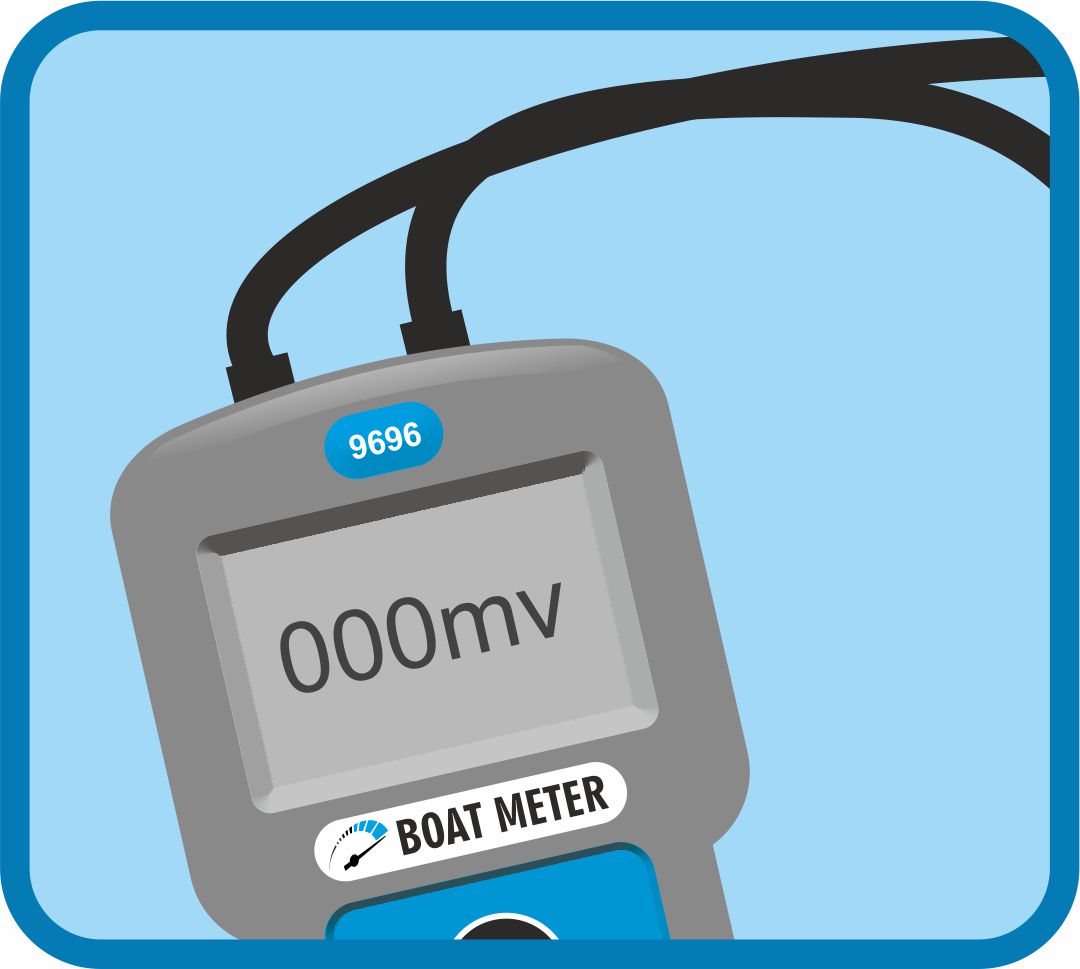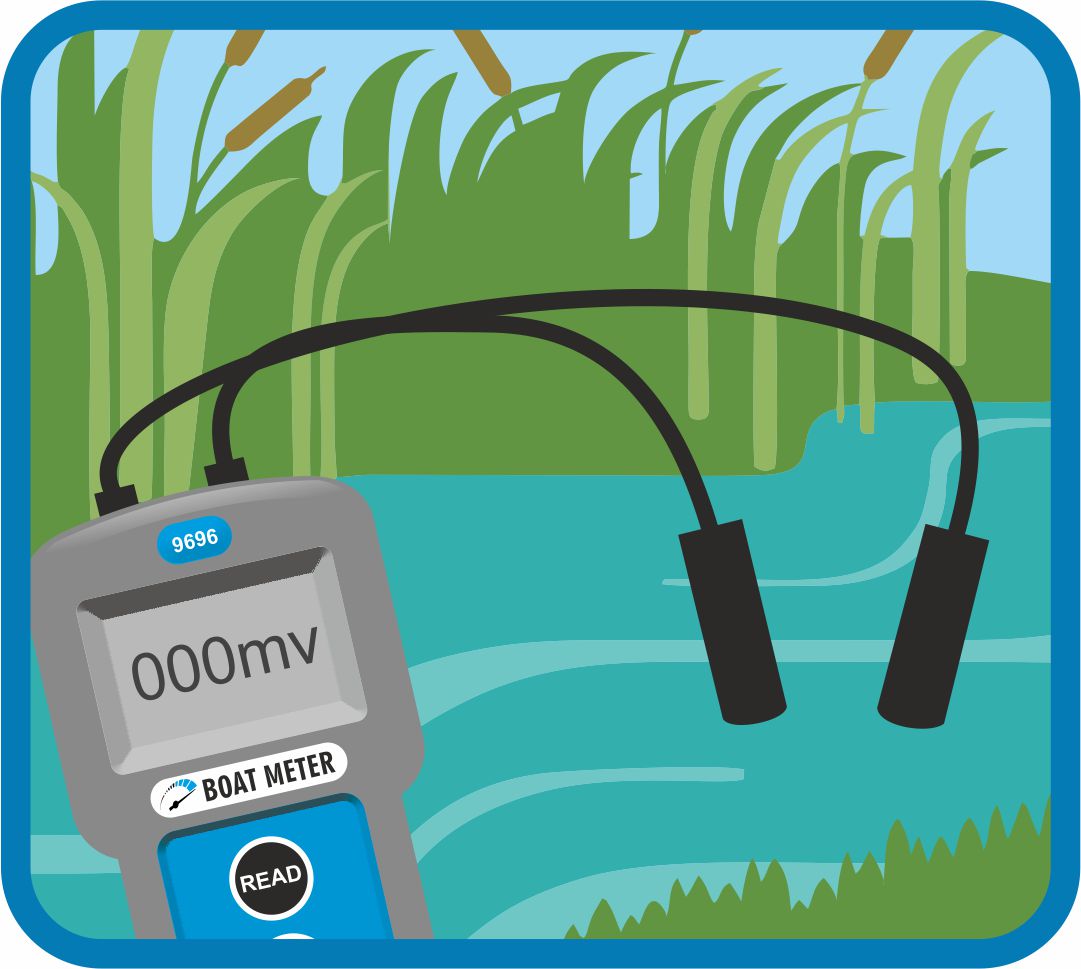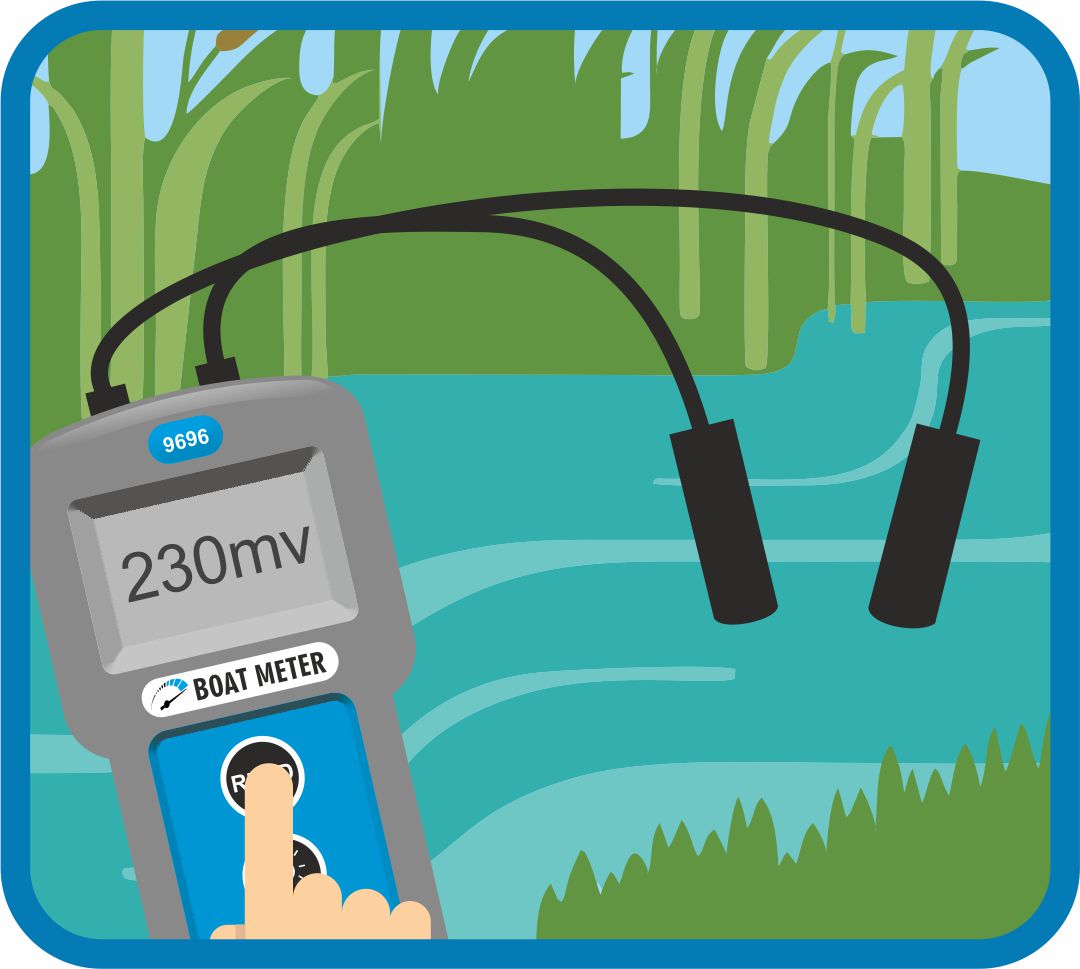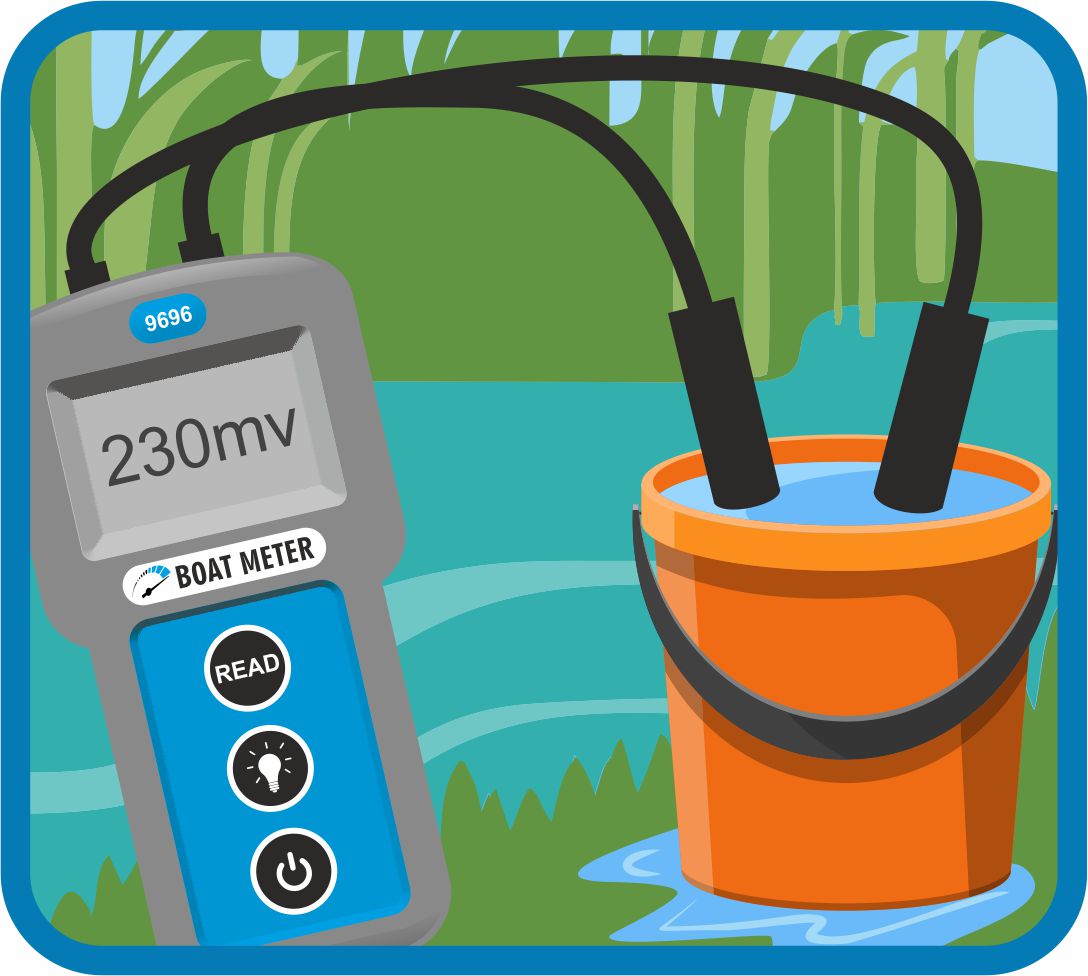Stray DC Current and why it increases corrosion

Connect The Electrodes
Remove the meter from the waterproof case and connect the cathodic protection reference electrode and the platinum redox sensor to the connections on top of the meter.

Place Electrodes In The Water
Now carefully lower the electrodes into the body of water that you wish to test and turn the boat meter on using the power button. (Please take care when near bodies of water)

Take the Water Reading
Now take the reading from the water by pressing the read button on the meters control panel the reading should be a positive number

Fill A Bucket With The Water
If you suspect that there is some stray DC present then fill a bucket with water directly from the body of water you are testing.

Take Reading in Bucket
After placing the bucket on a stable surface then proceed to re-take the reading again now that the water is isolated by the bucket.

Analyse & Record Your Findings
If there is a difference between the two readings then this most probably due to stray DC current being present in the water.
To Achieve This You Will Need
Here you will find a link to the product you will need to measure both hull potential and take water readings to determine what stray DC is present.
All you need do is measure the REDOX potential of the water where you believe there is a problem.
If there is stray DC the REDOX result will be High (typically over +300mV) and may be variable. In some cases, depending on the source, it can be negative this will depend on the proximity of the REDOX probe to an active Anode or Cathode. Make a note of this reading and then remove a bucket of water taken from the same place the reading was taken. If you take a reading in the bucket it will be the base reading of the Marina water with no Stray DC. The difference in the result shows the extent of the Stray DC. The bigger the difference the bigger the problem.
Don’t forget every 60mV increase is a 10 times more corrosive power. It is common to see 1000 and 10,000 times more corrosive activity with stray DC.
The first course of action is to isolate the issue by disconnecting the shore power on the suspected source and then re-test the water.
Learn how to measure your Hull Potential
